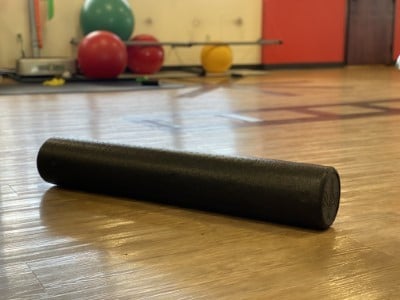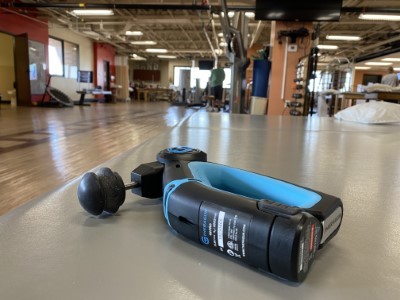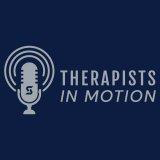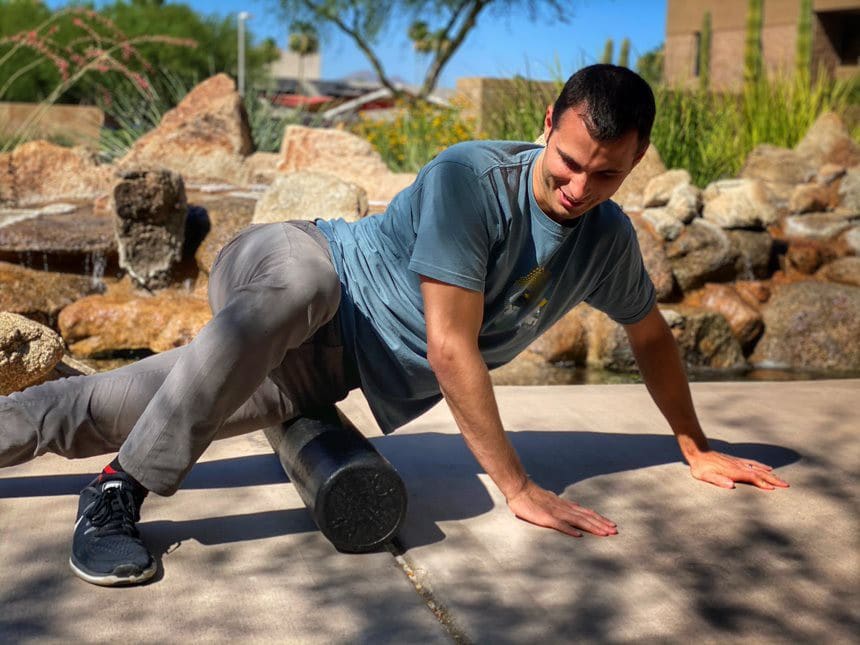Experiencing pain or tightness between appointments with your physical therapist or hand therapist? Try these tools and methods for self-massage and manual therapy.
Physical therapists and hand therapists are experts in getting your body to function and feel the way it’s supposed to. To accomplish this, therapists use a combination of exercises and hands-on (manual) techniques catered to your specific needs. In doing so, they work with each patient to address their individual needs and to help relieve pain and/or discomfort, speed up recovery from an injury or surgery, and improve movement and joint function. It is truly a team effort that requires expert physical therapist knowledge and consistent effort from the patient. An incredible service to have available; however, what if making it in to a therapy appointment isn’t an option at the moment, and you’re in need of immediate relief from sore and tight muscles? Luckily, there are a variety of great options available for you to help reduce muscle pain and stiffness right at home! Spooner physical therapist, Dan Miriovsky, PT, DPT, OCS, ATC, provides some insights regarding the why and how self-massaging is effective, as well as highlights some tools you can utilize in your home to help get your body feeling better.
Why should I try self-massage?
Whether you have a pesky knot in your neck from daily stress, lingering soreness in your quads from your workout, or tightness in your forearms from wrestling open yet another shipment from Amazon, you might find relief from one of the many self-release techniques and tools available. Studies have shown that, when done correctly and consistently, self-massage can reduce stiffness and tissue tension, increase blood flow, help with muscle recovery and soreness, and even lead to performance gains. In many cases, there are underlying issues that are contributing to the pain and discomfort you are experiencing. For example, that pesky knot in your neck could be the result of other muscle and postural imbalances that need to be addressed in order to get to the root of the problem. Self-massage can still provide temporary relief, but as Dan illustrates, it’s still imperative that you consult and work with your physical therapist to help make sure these aches and pains are taken care of for good! The evidence has been resounding and proven time and time again that a combination of manual therapy intervention and exercise prescription is the best for just about every condition out there. What tools are recommended? There are a number of self-massaging products available that can be used at home. Here are some great options for you to consider adding to your self-care toolkit:

Foam Rollers A very popular choice. Uses your body weight to help apply pressure across a wide surface area. Great for large muscle groups such as quadriceps (thighs), glutes, hamstrings, calves, etc.

Massage Hook Canes These hook-shaped devices allow you to apply pressure to those hard-to-reach areas. Ideal for your back, shoulders, and neck.

Massage Roller Sticks Also known as Marathon Sticks or Tiger Tails. These are rods connected between two handles that allow you to roll the rods along certain parts of your body. Think of a skinny rolling pin, but for your muscles.

Percussion Therapy Devices These are electronically powered instruments that provide quick, pulsating pressure in a concentrated area to help release tension and promote blood flow.

Sports Balls Tennis, lacrosse, baseball, even golf balls can double as fantastic tools to stimulate deep muscle massage in specific areas of the body. You can use the floor, a wall, or your upper body to help apply pressure.
How long should I use one of these tools and when?
How long a session should last really depends on you, but a good rule of thumb is to use a tool such as a foam roller or massage roller stick for no longer than 30 seconds on each muscle group. Percussion therapy devices often have a timer or an accompanying guide to let you know when you should switch. Likewise, for when to use them it’s really based on your need. However, if you’re an athlete or regular exerciser, Dan explains that there is evidence to support using a foam roller before a workout to help prepare and warm up your muscles. They are also useful directly after exercise to help your body recover, as well as reduce any soreness that may show up later down the road.
I’ve heard foam rolling hurts. Is it supposed to?
Not necessarily. Foam rolling and other measures of self-massaging involves applying pressure on areas of the body that are experiencing a certain level of discomfort. For some people, self-massaging can immediately alleviate this discomfort; however, others may need to get through an initial period of tenderness before the relief kicks in. Whatever your situation, Dan explains that the pain should always be tolerable. If it’s not, then he recommends adjusting your angle or amount of pressure you’re applying, or try a different self-massage tool altogether. As always, your therapist is a great resource. As Dan states, There are some strategies that we can work through with patients to help them find success with the tools they already have in their home, or that they are looking to purchase.
What’s the best way to get started?
Spooner Physical Therapy would love to help! Even if you aren’t able to come into a clinic, our therapists are on-hand via telehealth to help you select the right tool for a particular body part or issue, as well as teach you (or a willing and helpful family member) the right way to use these tools to get optimal results. Dan notes, I strongly recommend a consultation with a physical therapist to find the tool that works for them and their body, and be taught the appropriate dosage, as well as the proper movement strategy after that self-release.
Experiencing discomfort that cannot be resolved through self-massage or interested in consulting with a therapist on how to properly develop a self-care routine? Contact us today! Our team of physical therapists and hand therapists are ready to help!

Check out our Podcast on sleep and self-massage – ZZZZZ’S and Blasters – Recovery Part 2

